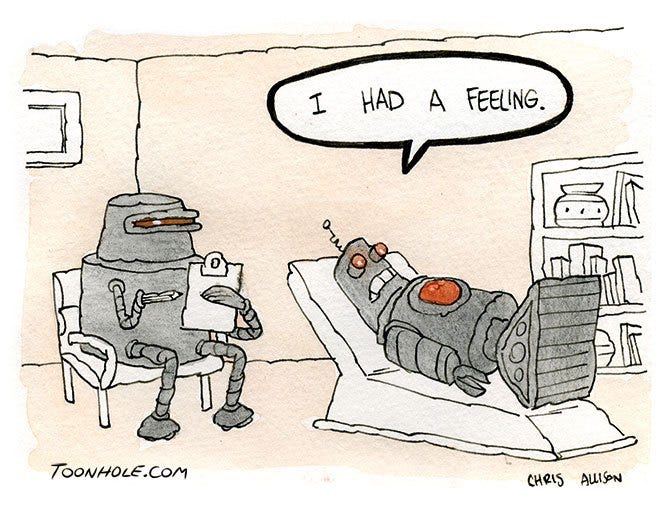This week’s newsletter looks at Enchanted Objects, Mental Health apps, Blockchain and my work in Thailand. I hope you find something interesting. Please let me know if you have comments.
Anything is Possible
For the past year I have been subscribing to Blinkist.com This app provides a 15 minute summary of over 3,000 non-fiction books in written or audio form. I usually listen to a book summary during the drive to the gym each morning. A much better use of time than listening to the rubbish on early morning radio.
Last week I listened to the Blinks for “Enchanted Objects” by David Rose. This book talks about the many objects that can and will exist in the future that will assist our everyday lives. Commonly known as the Internet of Things (IOT) it is a series of intelligent objects that are connected to the net and are able to add value in our lives. There are many of these object emerging. The highest profile examples are things like Fitbits and watches that track our daily exercise and heart rate.
The sensible question is why would I want to know my heart rate all day? You probably don’t, but it is being shown that Apple Watches can detect heart murmurs and other irregular beats. This you do want to know about and when you find out about it, you want to see a doctor asap. The latest Apple Watch can also tell if you have, had a sudden fall and can be programmed to call for help.
The applications for connected devices are only starting to emerge. Privacy is a major concern for many and it should be. It is likely that companies with stronger privacy provisions will see stronger and more consistent longer term growth. Always remember, that if you receive something for free on the internet, you are the product.
David Rose’s book is an examination of some of the ways that connected or enchanted objects can start to positively impact our lives. I found it inspiring and actually came up with the genesis of an idea for a connected object. Who knows one day I may actually seek to design and build it (also remember, ideas are free and abundant, only execution earns you money).
I enjoy Blinkist and will regularly mention books that I have found of interest. If you have read something interesting please let me know and I will have a listen.
From Success to Significance
Another area that is starting to emerge and gain some attention are Mental Health apps and bots. There has been a rise in mental health issues in the recent past. I don’t know if it is because the current generations are less resilient or if we are now more aware of the issues. Some argue the rise of smartphones and continuous connection leads to greater individual isolation, others argue it is soft parenting and a lack of individual fortitude. It is likely to be a combination of factors many of which are still to be identified. One thing is for certain, a high percentage, if not all, of us will from time to time have issues that need attention.
How can an app or a software bot help with mental health problems? It is early days but there are emerging AI driven bots that are designed to help with day to day mental health needs. Through interactions with the apps, these bots can monitor and identify changes in mood and demeanor. The more regularly the individual uses the bot the more the bot learns about the individual and the more accurately the bot can give feedback.
I would urge caution when looking at and trying these tools. I am not recommending any individual tool and would encourage seeking professional guidance when it comes to using a tool to help resolve any problems you may have.
If this is an area of interest I would recommend you listen to Caterina Fake’s podcast “Should this Exist” where she leads and in-depth examination of these tools including Woebot (www.woebot.io). Replika (www.replika.ai) is another chat based tool worth a look at. The Venture Stories podcast recently hosted Mark Goldenson the founder and CEO of Breakthrough Behavioral. Mark founded Breakthrough in 2009. It was a mental health startup running virtual mental health clinics, private online counseling and psychological care. Whilst not a bot driven business (it was connecting you with human counsellors) Mark is now an investor in this area and provides interesting insight into the development of AI driven applications and some potential ideas for products (e.g. a fitbit for mood and stress levels).
“Should this Exist” and “Venture Stories” are both available on iTunes and Spotify

from lawandai.com (a brief article on Mental Health apps and the law can be found here)
From Intention to Innovation
The most overhyped technology of 2017/18 had to be blockchain and cryptocurrency. I will concentrate this post on blockchain (sorry cryptobros, another time).
On Halloween 2008, Satoshi Nakamoto dropped the White Paper that outlined an alternative currency, Bitcoin. Satoshi Nakamoto is a pseudonym. The real person who developed the White Paper is unknown however it is likely to have been an individual that collaborated with others. The strongest rumors are that Satoshi was terminally ill at the time of completing the White Paper and that he (all the rumors are that it was a he not a she) died several months later. The Genesis Block for Bitcoin was on 3 January 2009 and thus a revolution was quietly born.
The White Paper also outlined a new method for managing a distributed ledger that contained all the information relating to who owned the cryptocurrency assets, who bought and who sold. This work was an advance on previous distrubted ledger proposals and it provided the underlying mechanism that allowed cryptocurrency to exist. This new method was called, Blockchain.
A blockchain is as the name implies, a chain of blocks. Each block contains a list of transactions, i.e. who bought and who sold. Once the block is full with transactions, the block is locked in a process called mining. Mining requires miners (basically people with huge computer processing power) to find a #hash ( a hash is a long number generated by a one way algorithm i.e. can’t be reversed, (see here for a long explanation)) that will lock the block. Once that block is locked it is immutable (can’t be changed). The successful miner is then rewarded (for the Bitcoin Blockchain they receive Bitcoin as a reward).
The value of a Blockchain is that it is a distributed public record of all the transactions. The blocks are not able to be changed without a majority of the participants agreeing. This makes change extremely unlikely and prevents hacking. It is what is called distributed trust. When you go to the bank to check your bank balance, you trust the bank to keep the records correctly and tell you how much money you have. Blockchain removes the bank from this equation. The public record of the Blockchain tells everyone who owns what, the trust is distributed.
Each Cryptocurrency anonymises who owns the currency by inserting a wallet into each transaction. Only you know that you own the wallet. The Blockchain will list which wallet owns each currency but not who owns the wallet. If you loose your wallet (i.e. it is hacked and stolen or you forget the password etc.) nobody can recover the contents. It is gone forever.
There is value in Blockchain outside of Cryptocurrency. Smart contracts are contracts that are held on a Blockchain (usually the Ethereum Blockchain) which allow for automatic execution once the conditions of the contract are met. For example if the contract is for goods to be delivered, once it is certified that the goods are delivered, payment for the goods can be automatically sent. This removes expensive middlemen from the process.
Blockchain is very much an emerging area. Currently the protocol layer is still being developed. Once that development is more advanced the application layer will emerge more clearly. It might help to think of the protocol layer as your computer and the application layer as the software applications that you use on the computer. As computers become more efficient and faster new and better applications can be developed.
I have probably confused some of you with my explanation of Blockchain. I tried to keep it as simple as possible. Don’t worry too much about it. Just as you don’t need to know how machine language works on your computer in order to use the software, you won’t need to understand the underlying mechanics of Blockchain to use future applications. The innovation will come.
The Entrepreneurial Journey
One of the most common questions that I am asked, after all the questions about Sacha Inchi, is “what is like to work in Thailand?”
My current venture is Zenda Life Foods. Zenda is a Joint Venture between a Thai firm and an Australian firm. I am Australian and live in Sydney and visit regularly. My partners are long-term Thai entrepreneurs and farmers who are full time in Thailand managing the farms and the factory. We have always found it easy to work together as we have common goals and spend time talking about how we want to develop and grow the business. Constant and open communication is key in any business.
The Thai people are as lovely as their reputation suggests they are. They are also very hard working. The amount of work that went into developing the farms was staggering. The project well planned and executed and took the untiring efforts of a significant number of local farms workers. Like people on the land the world over, they started early, worked through the day and finished late. No task was too difficult and no challenge was encountered that could not be overcome.
From my experience the Thai’s are skilled farmers and very in touch with the land that they work upon. They grow a range of crops and use years of accumulated personal knowledge to optimise the yield from their farm. No doubt technology will add more capability to the farming community in the coming years. This will only enhance the skills of a farming community that is already competitive on a global basis.
The countryside is peaceful. Not as developed as other western countries but that is changing as Thailand continues to grow and develop in the 21stcentury. Most people use smartphones. Landline based phones that are the legacy systems in many countries are not common in rural Thailand. Everybody has jumped to the latest technology. As technology enters the farming community, information will be delivered wirelessly via smartphones.
So to answer the original question, working in Thailand and with my Thai partners is a wonderful experience. I am lucky to be able to work with skilled and experienced people. If you have the time and desire, please visit Thailand. Please make sure you travel to areas outside the traditional tourist areas. It is a wonderful experience.

The Mekong River on the Thai border with Laos, not far from our new plantations.
Paying it Forward
If you have a start-up or know of a start-up that has a product ready for market please let me know. I would be happy to have a look and give the start-up a shout out to my readers if it is something that I think they could use. If you have any questions or comments please email me via my website craigcarlyon.com
Till next week.
The Logo on the header is “Thinking by Gregor Cresnar from the Noun Project”


